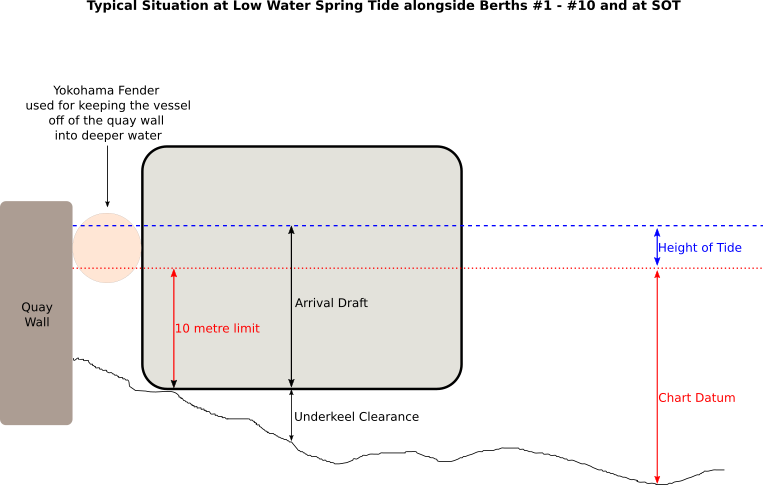Of late, there have been a number of cargo operation delays, mostly for bulk carriers and tankers, although not so much for container ships. This causes a number of vessels to stay outside the port limits (OPL), drifting in the outer roads, because there is no safe anchorage near the port entrance – otherwise, the port is operational 24/7/365.
Berthing delays are due mainly to low labour productivity for bulk cargo discharge and general cargo discharge, although steel products in heavy coils and project cargoes are handled very fast.
Dry Bulk cargoes - Cement Clinker, Coal, Fertilizers, Grain, Sugar and others, are delayed due to reasons other than the weather. Warehouse space or cargo documentation delays are sometimes given as reasons for berthing delays.
There are Berths No. 3 and 4 which are considered as dedicated Bulk Grain Handling Terminals, with capacity of discharging upto 10,000 tonnes per 24 hours using two or three Marine Legs at a time.
However, the alternative is to discharge grain into portable Bagging Plants standing on the quayside, using ship’s cranes and grabs, from which the bags are loaded onto road transport trucks for direct delivery to the consignee’s warehouse. This system has a capacity of discharging up to 3000 tonnes per 24 hours, weather permitting.
The last alternative for discharging bulk grain cargoes is to use grabs and discharge directly into tipper trucks which are then delivered to the consignee’s warehouse through weigh-bridges.
Tankers are delayed due to lack of “ullage” in the shore tanks, therefore, after each tanker cargo discharge, the following tanker has to wait for the shore tanks to be emptied to create “ullage”.
Cargo discharge outturn for dry bulk cargoes is by Draft Survey, in addition to the Shore Scale figures given at the Bulk Grain terminal.



